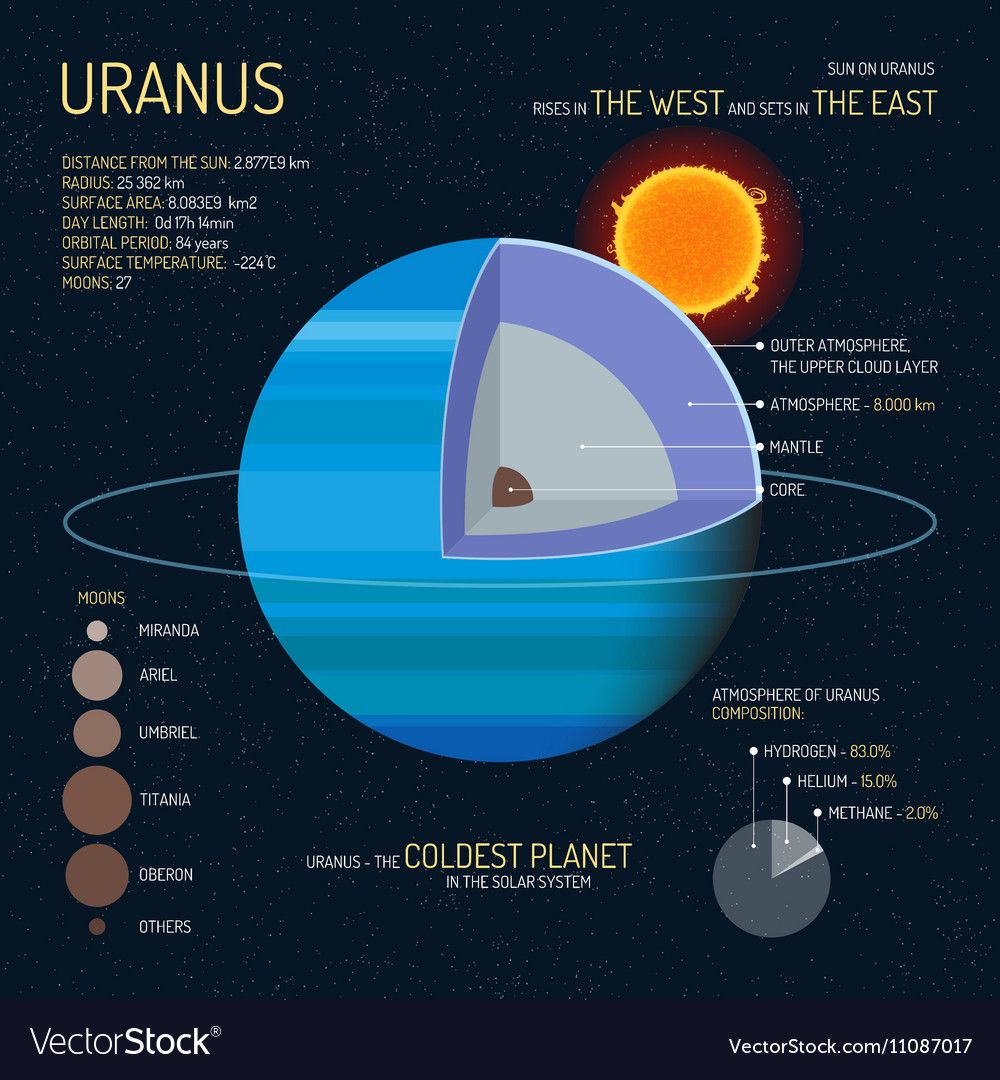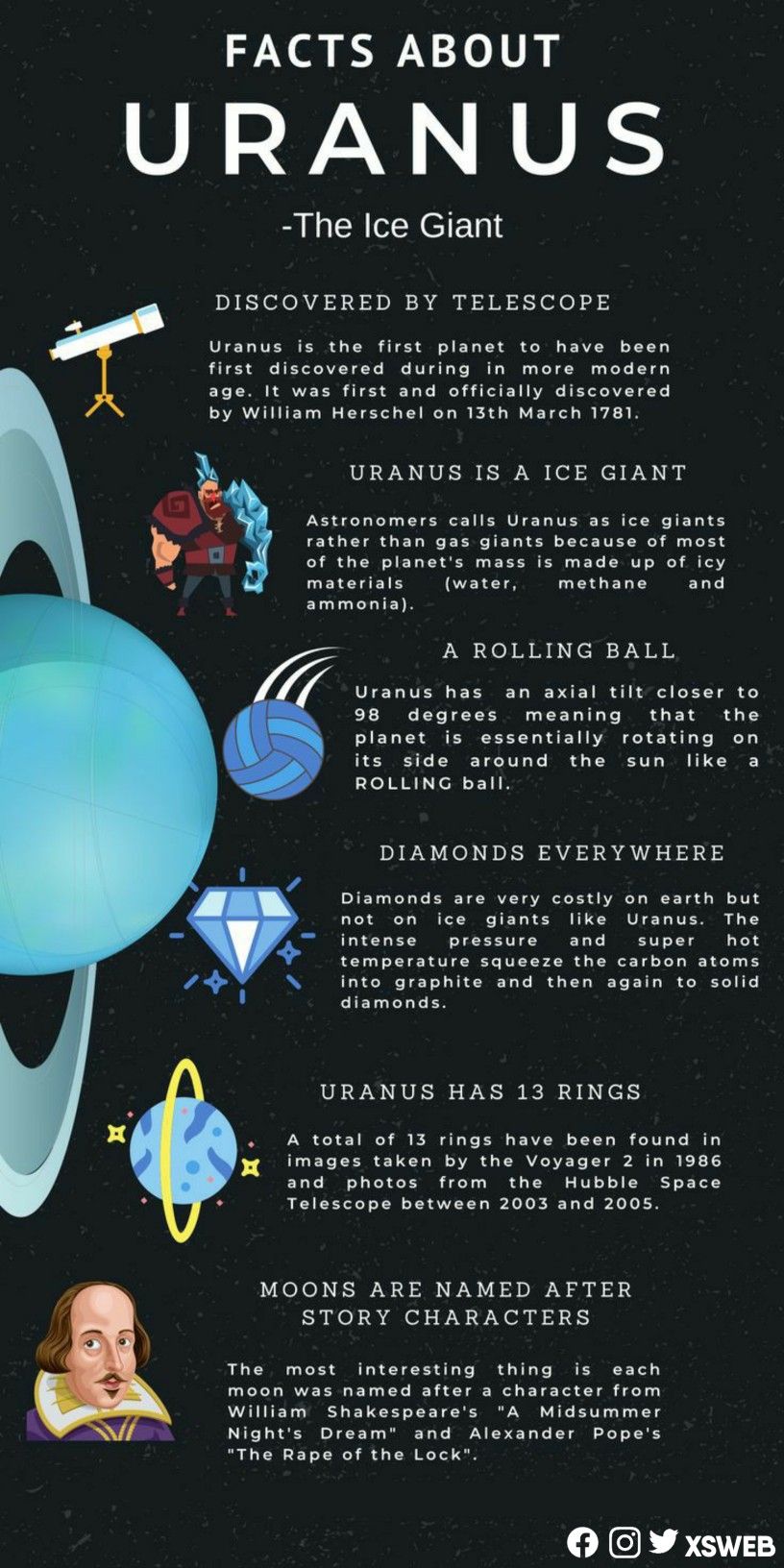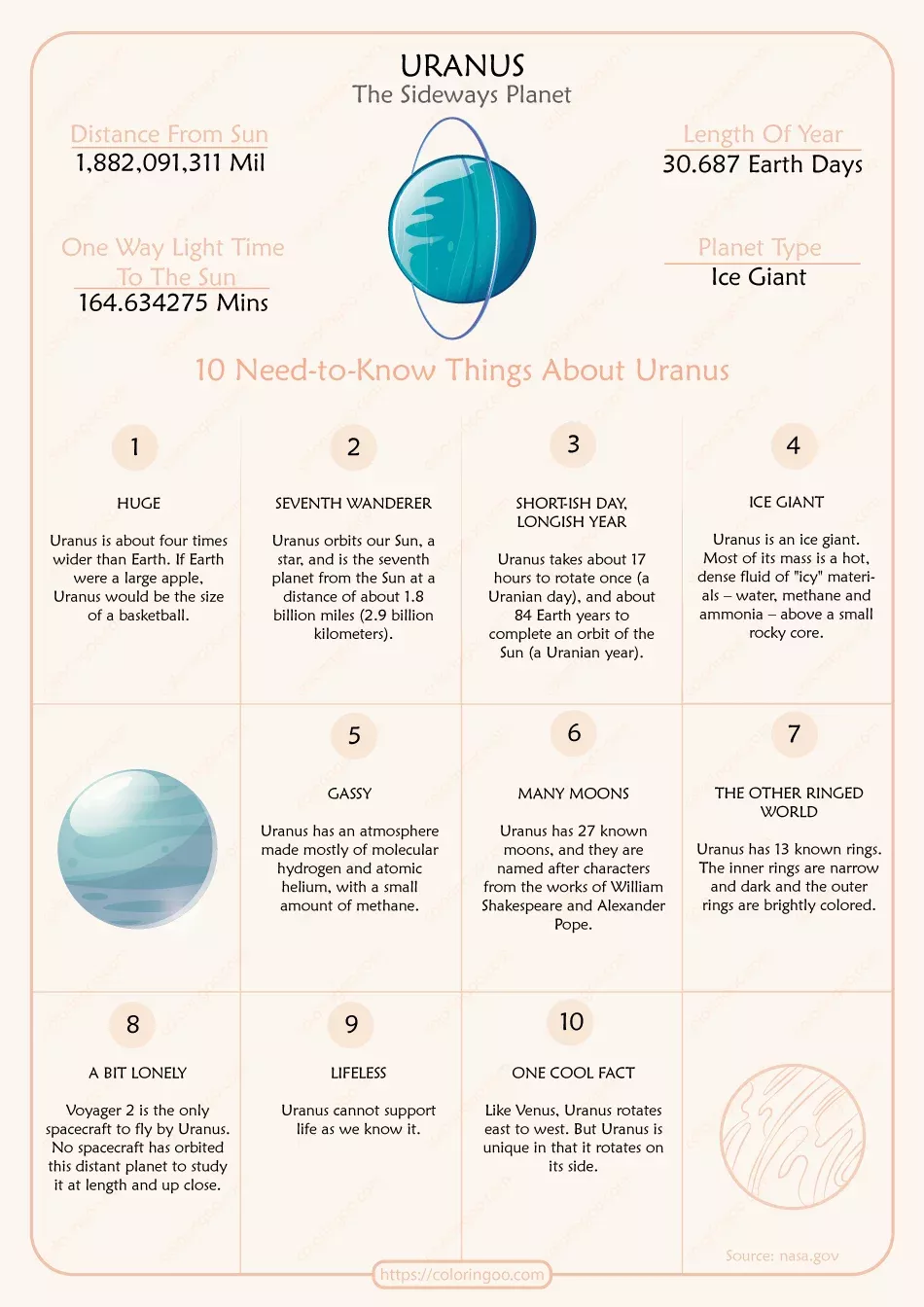Home > Sections > The Universe > Uranus
Last Updated: 14th June 2023
ARCHIVED ITEM: this page is no longer updated.
Uranus
Keywords
Uranus, blue planet, rings, Voyager 2, West to East rotation, axis on side, Johann Elert Bode, Neptune, rocky core, fluidic ice, extreme cold, Georgium Sidus.
Introduction
The third largest planet in the Solar System, Uranus was first discovered using a telescope. It has 27 known moons, all of which are named after characters in the works by William Shakespeare and Alexander Pope.
Planet Features
Size: the planet is about four times the size of Earth, and if you were to measure using everyday objects, if you place an apple alongside a basketball, you would see the respective sizes of Earth and Uranus.
Visual Appearance: a dull blue glow, Uranus is on it's side, so it looks like it's been turned over. Everything to the eye looks like it goes round from top to bottom, but this is how the planet sits. There are a series of 13 rings, which can be seen using a telescope, but they are quite faint, so it has to be a clear night in order to see them properly.
Structure: an ice giant, Uranus is made up of a rocky core, mantle and gaseous atmosphere, made up of hydrogen, helium and trace amounts of methane. It also has dense fluid of "icy" materials such as water and ammonia. This in turn makes the planet extremely cold, along with the fact it is that far away from the Sun.
Name: bucking with the usual trend of being named after a Roman god, Uranus is named after a Greek god. The deity of the sky, Uranus, who was the father of Cronus (Saturn) and grandfather of Zeus (Jupiter).
Interesting fact: the radioactive element Uranium was named so after Uranus in 1789, just eight years after Uranus was discovered.
More: Uranus has been the subject of many schooltime jokes. For obvious reasons surrounding the name, it has been used to remark about the posterior of someone. It isn't pronounced that way by most scientists, instead being pronounced more like YOO-ranus as oppposed to YOOR, anus. Originally, the planet was to be named Georgium Sidus (George's Star) after King George III, however this was not well received outside the United Kingdom, and another name was to be assigned, which was quickly thought of. Other names included Neptune, but in 1782, a suggestion by Johann Elert Bode was given in the form of Uranus, after the Greek god Ouranus.
Uranus has relatively short day (17 hours to fully rotate on its axis), but it takes 84 Earth years to go a full orbit around the Sun. This is called a Uranian year.
Here is a YouTube video from National Geographic on Uranus:




 Earth
Earth



